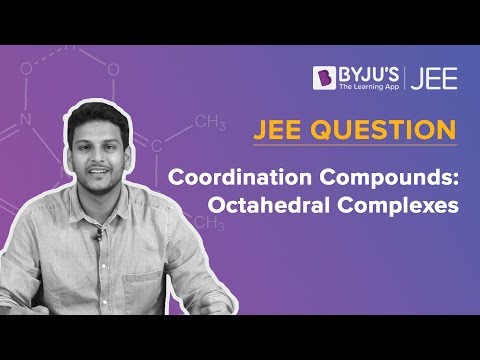According to the CBSE Syllabus 2023-24, this chapter has been renumbered as Chapter 5.
Coordination compounds is a challenging area in modern inorganic chemistry. Due to the advancement in this area, new concepts such as models of bonding, molecular structure, important insights on the functioning of complex components of the biological system, etc., have been developed.
A. Werner was the first to attempt to explain the reaction, formation, structure, and bonding of coordination compounds. The theory given by him postulates two different types of linkages by metal ions or atoms in the coordination compound. They are primary linkages and secondary linkages. In modern chemistry language, these bonds are recognized as ionic bonds (ionizable) and covalent (non-ionisable) bonds, respectively. With the help of isomerism, he predicted the geometrical shape of a majority of coordinate entities.
For more information on Isomerism, watch the below videos


CBSE Class 12 Chemistry Chapter 9 Coordination Compounds – Related Links
Valence Bond Theory Coordination Compounds
This theory explains the formation, geometrical shape, and magnetic behaviour of coordination compounds. However, valence bond theory (VBT) fails to give a quantitative interpretation of magnetic behaviour and also has nothing to say anything about the optical properties of these compounds.
For more information on Coordination Compounds, watch the below videos


Few Important Questions
- Explain the difference between unidentate, didentate, and ambidentate ligands with two examples each.
- What does the stability of a coordination compound in solution mean? What are the factors that govern stability complexes?
- Explain Werner’s postulates for the bonding in coordination compounds.
- What are the different types of isomerism possible for coordination compounds? Give an example for each.
- Explain the chelate effect with an example.
- What is a coordination entity? Give one example
- How many geometrical isomers are possible for Co(NH3)3Cl3
| Also Access |
| NCERT Solutions for Class 12 Chemistry Chapter 9 |
| NCERT Exemplar for Class 12 Chemistry Chapter 9 |
To discover more about this chapter, access Coordination Compounds Class 12 CBSE Notes and register with BYJU’s.
Other Important Links:
| Difference between Covalent And Ionic Bonds | Ligands |
Frequently Asked Questions on CBSE Class 12 Chemistry Notes Chapter 9 Coordination Compounds
What are coordination compounds?
It is a compound that contains coordinate bonds, typically between a central metal atom and a number of other atoms or groups.
What is a valence bond?
Valence bond is a chemical bonding theory that explains the chemical bonding between two atoms.
What is an enantiomer?
Enantiomers are a pair of molecules that exist in two forms that are mirror images of one another but cannot be superimposed one upon the other.
Comments